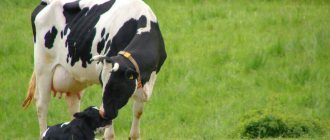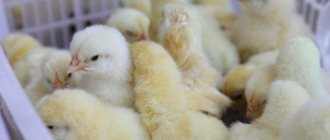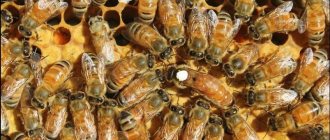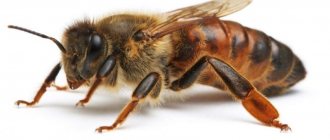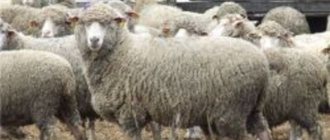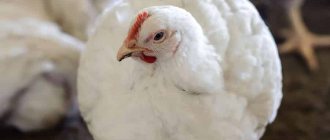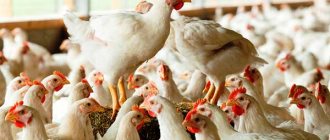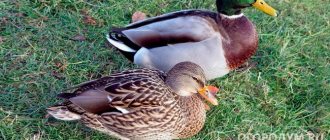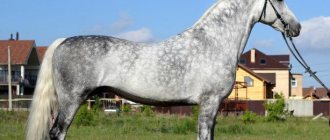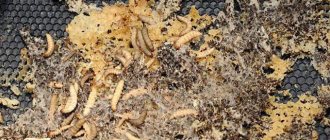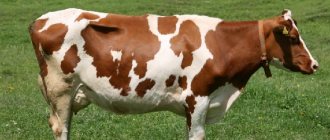Swiss cows are rarely found on domestic farmsteads. The reason, apparently, lies both in some features of keeping and feeding animals, and in the high cost of purebred young animals. But, despite the existing problems, many owners of individual farmsteads dream of having such productive, beautiful and good-natured cows. Therefore, we decided to bring to the attention of readers a story about this interesting variety of cattle.
Swiss cows (pictured) are popular all over the world and are prized for their very high quality milk.
Origin story
Photo:
The Schwyz cow breed was bred in the Swiss mountain canton of Schwyz back in the 14th century. Local short-horned cows crossed with representatives of eastern breeds.
The goal of the breeders was to obtain a breed with high meat and milk productivity and good working qualities.
The best productive specimens were used for crossing and reproduction. As a result, it was possible to obtain cows with precociousness, high productivity in meat and milk, and a strong, harmonious physique.
Improvement of the Swiss breed continues to this day. There are two types of cattle in Switzerland: mountain and valley. They introduce variety into the population, which contributes to the further improvement of the breed.
The Schwyz breed gradually spread to Italy, Austria, Germany, and in the 20th century it was brought to America. In each country, the breed acquired its own characteristics of appearance.
For example, cows raised in Germany and Austria are smaller in size. In Italy, a variety has been bred that has more outstanding meat productivity.
Representatives of the Swiss breed of cows came to Russia in the 19th century. Based on imported breeding and bull stock crossed with local cows, the domestic Brown Swiss breed appeared. This breed line includes three varieties: dairy, dairy-meat and meat-dairy.
Since 1905, Swiss bulls have been kept at breeding stations and used to improve the productive qualities of local livestock. Herds of the Schwyz breed were kept on the territory of the Smolensk province and on the farms of the Agricultural Academy in the Moscow region.
After the organization of breeding farms and state breeding nurseries in Russia, large-scale breeding work with Swiss cows began. The number of Swissies increased especially after the breed was included in the State Committee for Animal Welfare in 1925.
Currently, the dairy-meat type of the Swiss breed is especially popular among Russian farmers, but individuals with deviations in the dairy or meat side are often found.
Behavior
Schwitzes are herd animals with a very good sense of hierarchy.
They choose a leader once and he does not change again. At the pasture, the leader sets the direction where the entire herd is moving. A leader is chosen through forceful clashes between several bulls from the entire herd. They understand each other by the position of their heads, which can express anxiety, excitement, fear, and cows also communicate using smell.
Their mooing also varies. It can be prolonged, which means pain. They moo in a completely different way when they call a calf or want to eat.
Schwits have a very calm and docile character , which is why they are the favorites of many Russian farmers.
Habitats
The Schwyz breed is common in Italy, Germany, Austria, North and South America, and the Russian Federation. In Ukraine, Schwyz cows are bred in Sumy, Transcarpathian, and partly in Chernihiv and Kharkov regions. There are up to 1000 head of the Swiss breed on Ukrainian farms.
Due to its high productivity, the Swiss breed of cows is quite popular in Russia. Representatives of this breed make up about 2.5% of the total livestock kept in the country.
Distribution area
The breed occupies one of the leading positions in Swedish livestock breeding and has become widespread in countries with a climate similar to that of this country. Cows are often used for crossing with cattle of other breeds in order to improve valuable agricultural qualities in the offspring.
Expert opinion
Zarechny Maxim Valerievich
Agronomist with 12 years of experience. Our best country expert.
Ask a Question
For example, crossing with Holstein animals increases fertility, cows calve easier, and suffer less from mastitis.
Description of the breed
General characteristics of breed standards:
- Live weight of cows is 570-600 kg, bulls - 900-1000 kg;
- The color is brown in different tones, shades and intensities. A stripe of light hairs runs along the upper line of the body. Bulls have a darker color on the head and front of the body.
- The body is proportionally built, tightly built.
- The skin is thin and elastic.
- The nasal planum is lead colored with a light edging around it.
- The body is slightly stretched, oblique length - up to 170 cm, height at the withers - up to 135 cm;
- The neck is short and muscular.
- The head is small in size. The forehead is wide.
- the chest is wide and deep;
- The croup is wide and long;
- The udder is cup-shaped with cylindrical teats, the udder index averages 43%;
- The hooves are strong and stable;
- The back is flat and wide;
- The horns are dark in color;
- Temperament is calm:
- Short, thick hair;
- The skin is dense and thin;
The body type of the Swiss breed depends on its variety:
- The Schwyz milk variety has a stretched body and flat ribs. Her bones are thinner. The belly and udder are rounded.
- The milk-meat type is distinguished by pronounced muscles. The udder is medium in size, cup-shaped.
- The meat and dairy type has a short body with loose muscles. The udder of this variety is poorly developed, the bones are porous and loose. The chest is convex and powerful.
Animal exterior
The main feature of the animal is the underdeveloped horns of cows and small, neat and straight horns of bulls. The color is gray, sometimes gray or ashen, the shanks are white.
The Brown Swiss has a wide and straight back and a small head. The tail is long and reaches almost to the ground. The cattle's coat is short and silky, although the "Swiss" coat tolerates cold weather well.
The udder is large, but milking is significantly less than that of most breeds. This breed of cattle has a soft and pliable character. The calves' fur is much darker than that of their parents. The neck is of medium size and well developed. A cow's tongue can easily reach any part of the body. The hooves are light, and the legs themselves are thin and sinewy. The Kostroma breed is very similar to the Shvitskaya, they are often confused.
Reviews
According to farmers, the advantages of the breed include:
- resistant to diseases, have good health;
- animals are characterized by early maturity;
- have a calm character;
- perfectly adapt to different climatic conditions;
- Animals have well-developed reproductive functions.
The persistent transmission of their productive qualities to their offspring allows these animals to be used today to breed new breeds of cows. Along with good productive and economic indicators, there are also disadvantages.
One of the main ones is the fact that the Swiss cow is very demanding in terms of living conditions. Last but not least is feeding the animals.
A large percentage of cows with an irregularly shaped udder and closely positioned teats can also be considered a significant drawback, which does not allow machine milking to be used on them.
In addition, certain difficulties arise during mechanized milking of cows due to the very low rate of milk production.
On average for the breed, this figure ranges from 1.1-1.3 kg per minute.
Health
Productivity, both meat and dairy, directly depends on the health status of cattle. A healthy animal must be provided with the necessary living space, receive the required amount of food, move freely around the stall, and see its relatives. Walk in the fresh air, move, rest for the prescribed amount of time.
If the maintenance rules are followed, Swedish cows rarely get sick. Infectious diseases, injuries, diseases of metabolism and internal organs appear due to improper feeding and maintenance. Animals get sick if they live in a damp, dirty, dark, damp room. After identifying the disease, sick individuals must be treated immediately.
Milk productivity
The productivity of a Swiss cow in this direction is 3-3.5 tons of milk with a fat content of 3.6-3.8% per year. In breeding farms, there are individuals that produce up to 5 tons of milk with a fat content of 4%.
The percentage of proteins is relatively low - up to 3.5%. milk flow rate – 1.2 kg per minute.
Indicators of selected individuals are 10-12 tons. Swiss cow milk has excellent taste. First of all, it is used for the production of elite varieties of hard cheese.
Specific productivity indicators depend on the type of cow:
- Milk and meat. The weight of a cow is 550 kg, a bull is 900 kg. Milk yield - from 5 to 12 tons.
- Meat and dairy. The weight of a cow is 800 kg, a bull is 1100 kg. Milk yield from 4 to 8 tons.
Swedish Herefords
Hereford animals were developed in England in the 18th century. They are distinguished by their red and white color. The fur on the head is white, the body is dark red. The belly and lower limbs remain white. Bulls have a richer color than cows. The animals are small in size. The height of bulls at the withers is 135 cm, that of cows is 125 cm. The head is large and massive. Animals have horns. The neck is short, and bulls have a hump. The back is straight. Chest circumference 195 cm. Skin folds hang down on the chest. The limbs are short but strong.
Animals can endure long journeys or be on their feet for long periods of time, moving long distances in search of food.
- The body of Herefords is muscular, but the muscles are not visible behind the thick skin. Leather is of particular value. Clothes and shoes are made from it.
- The calf is born with an average weight: bulls - 33 kg, heifers - 28 kg. Calving takes place without pathologies. Twin pregnancies are not observed.
- The young grow quickly. The milk period for calves ends at 8 months. But from 2 months, adult food begins to be introduced into the diet of young animals. Daily weight gain is 1200 g for heifers, 1400 g for bulls.
- Despite the accelerated gain of muscle mass, the breed is not considered precocious. The heifer experiences her first calving at 24 months.
- The Swedish Hereford breed of cows does not have high milk production. During lactation you can get 3.5 tons of milk from her. Fat content 3.9%. This is a good result for individuals of the meat breed. The milk is used to feed calves and to make cheese and chocolate.
- Herefords are unpretentious eaters. They love succulent, soft food, but they also digest hard plant stems, branches of trees and shrubs well. In northern Sweden, the vegetation is not lush. Animals are able to find food under the snow and among loamy and rocky soil.
- Animals are slaughtered at 20 months. By this time, bulls can weigh up to 900 kg. In Sweden they do not use the method of rearing bulls. They are given a normal diet.
More on the topic: Features of keeping the Danish red breed of cows
Swedish Herefords have increased immunity. They do well with seasonal acclimatization. In summer, animals are kept on pastures, in winter in barns. The optimal room temperature is +7 C. If necessary, barns are insulated.
Meat productivity
Characteristic:
- live weight of the bull – 900 kg;
- live weight of the cow – 600 kg;
- At birth, the weight of calves is 35 kg;
- increase in live weight per day – up to 1 kg;
- weight of young animals at 12 months of age – 250 kg;
- weight of young animals at 18 months of age – 350 kg;
- slaughter yield – 55%.
At birth, calves of the breed weigh 35-40 kilograms. Weight gain is up to a kilogram per day.
Schwyz bulls are quite well-fed. They are large in shape with an impressive neck and large head. Bulls produce high-quality, low-bone meat.
Breeding
For breeding the breed, heifers are selected starting from the age of one and a half years. From the first period of pregnancy, heifers are kept together with other animals. They move out a week before calving.
Born calves are kept in a warm room, paying them enough attention, carefully monitoring their well-being.
In addition to milk, the diet of calves should include oat-bran mixtures. This method of feeding will help the cow recover quickly after calving, as it will reduce the load on her body.
Prospects for cultivation
The efforts of breeders are aimed at improving the breed and reducing their shortcomings. First of all, work is underway to increase the milk flow rate. Breeders set themselves the task of increasing the milk yield rate to 2 liters per minute.
For this purpose, individuals with the correct udder shape are allowed for breeding. The breeding stock uses Swiss bulls of American selection. The heifers obtained from these bulls are distinguished by a pronounced body type, characteristic of dairy breeds.
The Schwyz breed of cows is considered promising for raising on a private farmstead. When using manual milking, you can ignore the structure of the udder and get a sufficient amount of milk.
Schwyz cows are smart and calm. They produce tasty and nutritious milk. These qualities make breeding the breed quite promising.
Reproduction and calving
The first pregnancy usually occurs at the age of 1.8 years in females and about the same in males. Sometimes the indicator for mating is the weight of a Swiss heifer - it should reach 380 kg, and one individual can produce up to 18 calves in its lifetime.
Swiss heifers intended for breeding are separated from the rest a week before mating. Calves are quite large and develop quickly: they weigh 37–42 kg and, with proper nutrition, gain 1 kg per day. Due to the large size of the fetus, Swiss cats need obstetric assistance; they cannot do it themselves. One of the complications during the lactation period is mastitis, which develops due to the inability of the udder to feed. In general, calving occurs without pathologies.
For the first 7 days, newborns live with their mother. During this period, they are fed with oats and bran for speedy recovery and proper development. There is little milk at this time, so the nutrition of the young requires special attention, and the calving individual is milked 5–6 times a day. With proper nutrition and care, Swiss calves quickly gain weight: by the time they are one year old, the animals already reach 260–300 kg.
Content
The Schwyz breed of cows can be kept in a stall or stall-pasture method. The stall method is suitable for farms with calves, if there are year-round supplies of feed (grain, greens, silage and root crops in winter).
For private farming, the pasture-stall housing method is most suitable. At the same time, the winter period gives way to summer grazing on pasture. For grazing, it is recommended to use specially prepared meadows with specially grown perennials.
The cow needs a comfortable, warm room. For one cow, an area of at least 24 square meters is required, with a ceiling height of at least 2.2 meters.
In such conditions, you can keep a cow with a calf. Feeding: what to feed, frequency of meals, extra. nutritional nuances; adults: similar)
The flooring in the barn must be particularly durable, since the weight of the animal is quite large. The surface should not slip, otherwise the cow may injure her legs.
The room should be well ventilated, but without drafts. It is very important to provide good lighting in the barn. Access to natural daylight must be provided.
The barn must be regularly cleaned and the bedding changed. It is also necessary to care for the cow's body, cleaning it from dirt with a stiff brush.
The udder of heifers requires special attention: washing before milking, lubricating with special compounds to soften the skin and avoid cracking of the teats.
Cleaning is carried out according to the following algorithm:
- First, all removable items are removed from the barn and all light sources, fans, and heaters are tied with polyethylene.
- After this, cleaning is carried out. You can use both automatic devices and manual equipment.
- Then the barn is washed with a strong stream of water (up to 25 atmospheres), removing small particles of dirt.
- Particular attention is paid to hard-to-reach areas and crevices. Provide free flow of water in advance so that puddles of dirt do not stagnate on the floor.
- After 3 hours, repeat washing is carried out.
- Disinfection begins in a clean and dry barn. After this, the room is well ventilated and dried.
According to veterinarians, the best disinfectants are: sodium hydroxide; sulfuric acid (as well as hydrochloric and lactic acid); slaked lime; formaldehyde; chloramine
In addition to general cleaning in the barn, it is important to remove food debris from the feeders.
Remember that cows have a very sensitive digestive tract, and everything eaten will certainly affect the quality of the milk. Don’t be lazy to thoroughly wash the containers before each feeding and watering.
Arrangement of the barn
The preparation of the stall must be planned in advance before the cattle are transferred to it. At the same time, it is important to pay attention not only to the cleanliness of the room, but also to its indicators of humidity, temperature, illumination, and ventilation.
When insulating a barn, do not tightly board all the windows, because ammonia fumes are very harmful to the health of the animal. It is worth taking care of year-round air exchange and at the same time eliminating drafts.
Important! In the barn, it is recommended to place transoms above the level of the animal’s head. It is advisable to disinfect the walls of the barn with slaked lime, and cover the floor with a 10-centimeter layer of fresh straw, peat or sawdust.
It is recommended to change the litter every day, removing cow dung. Don't let your horned charges trample on their own excrement. Otherwise, they are at risk of infectious hoof pathologies and respiratory complications.
Some breeders share their experience of keeping cows on the so-called deep litter. This method consists of a one-time manure removal that occurs in the spring.
The rest of the time, throughout the cold season, the owners only add a new layer of fresh straw on top. Thus, the barn is also heated.
According to experts, this method is convenient because it requires less effort and time. However, its disadvantage is the double consumption of litter and excessive gas pollution in the room. In addition, the cattle will need to be provided with a feeding chute.
Experienced livestock breeders recommend paying special attention to the feeder for hay and green mass, because these are the priority feeds for cattle, which must always be within their reach.
But you don’t have to worry about the container for wet mash. Any buckets can completely replace them (usually the cow is given similar food during milking).
Important! Pine wood is preferred for making a wooden cow feeder as it is durable. Extremely undesirable: plywood, fiberboard and chipboard.
The classic version of a cattle feeder is a trapezoidal design with a wide base, which will allow the animal to pick up small foliage.
Its length and width must be at least 80 cm for one individual. The same applies to drinking bowls. It is important that there is always fresh water in the barn.
Please note that cattle need about 100 liters of water per day for full growth and development. Therefore, drinking bowls must be easy to maintain and safe. In private farmsteads, a bucket or basin is usually used for watering. And on large farms they use automatic installations.
An important detail in the barn is the stall. If a cow immediately lies down when entering a room, it means it is comfortable. The dimensions of this zone are calculated based on the dimensions of the wards.
Experienced breeders advise building a structure at least 1.25 m wide and about 3.5 m long. It is important that the cattle rest at least 14 hours a day.
There is an opinion that every hour a cow lies down brings an additional liter of milk.
Feeding
The basis of the diet of livestock of this breed should be dry hay, silage, bran and fresh vegetables. In summer, animals must be allowed to graze freely, preferably on specially prepared meadows with pre-planted perennials of the most preferred species.
To increase milk productivity and milk quality, it is very important that the feed includes peas, clover, vetch and alfalfa.
Newborn calves and newly calved cows require increased attention. Their diet should definitely include an oat-bran mixture, which will allow the cow to quickly gain strength and recover after giving birth.
For the main herd, the recommended diet is as follows: in the morning - water, hay and compound feed, in the afternoon - water and hay, in the evening again compound feed and hay with water. Also, every day animals need to be given a certain amount of green succulent feed - vegetables, grass, silage, etc.
Feeding in winter
In winter, the basis of the diet of Swiss cows is:
- hay (made from meadow grasses, should always be within the cow’s access area);
- silage;
- straw;
- roots;
- chaff;
- food waste;
- grain feed;
- concentrates;
- vitamin and mineral supplements (recommended for young animals and recovered animals);
- mixed feed (can consist of ingredients of plant and animal origin).
Since cattle have a rumen type of digestion, hay should predominate in their nutritious diet. This is important for the proper functioning of the animal’s gastrointestinal tract.
Features of diet preparation
Cows do not cause any particular problems with feeding their owners. The diet is based on the time of year and the condition of the animal. In the summer months, in addition to fresh grass, complementary foods should contain bran, meal, and oatmeal.
If it is impossible for livestock to roam freely on pastures, fresh greens must be given directly at the place of keeping by delivery.
In winter, the main food is silage and hay.
Daily winter diet:
- hay – approximately 6-7 kg per individual;
- silage – about 30 kg;
- cake - about 2 kg;
- bran – about 2 kg;
- potatoes, beets or other vegetables - approximately 5 kg.
The daily norm must be correctly distributed throughout the day:
- roughage is served with the first feeding;
- the rest of the food is supplied throughout the day.
You need to be careful when changing your diet from winter to summer. Typically, grass is mixed with hay, increasing the volume daily until green grass replaces the hay.
Another maintenance rule is free and constant access to water. This rule especially applies to the summer season. The daily water consumption of one cow is about 70 liters.
